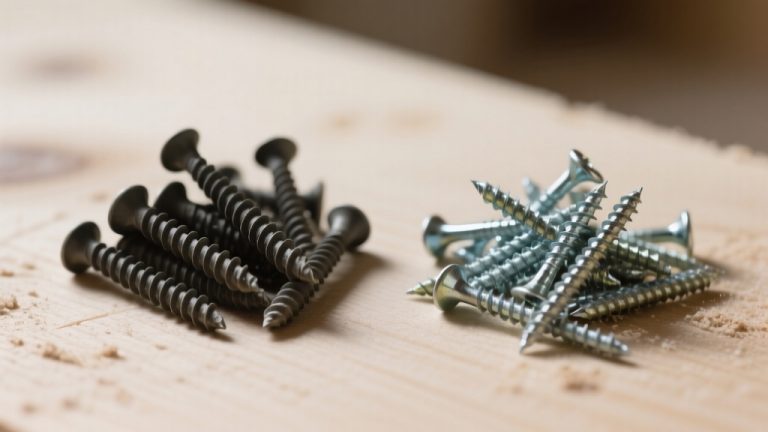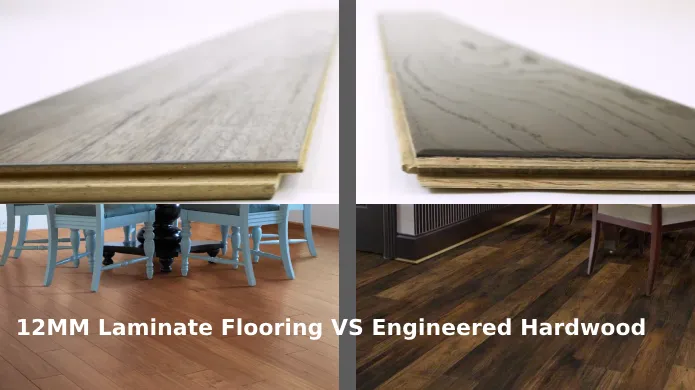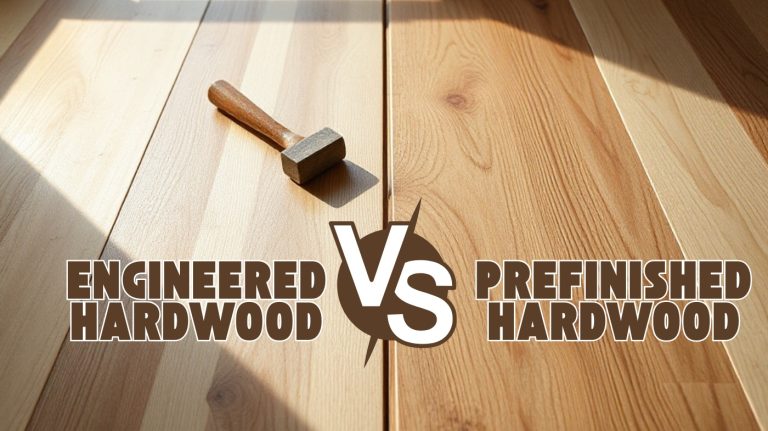Cypress Mulch vs Hardwood Mulch: Ultimate Garden Guide
If you want durable mulch that resists decay and maintains color longer, cypress mulch offers natural oils and slow decomposition but comes at a higher cost and impacts sensitive wetlands.
Hardwood mulch breaks down faster, enriching soil more quickly, is more affordable, and generally sourced sustainably, though it may include chemical residues if recycled.
Both improve soil moisture and weed suppression differently. Understanding these trade-offs will help you decide what suits your garden’s environmental and aesthetic needs best.
- Twice milled premium cypress mulch
- Ideal for frogs, snakes, lizards and other reptiles
- For use in both high humidity and low humidity habitats
- All-natural mulch: 100% hardwood mulch, no dyes or additives
- Uses: mulch, soil supplement / additive, decor / aesthetics
- Benefits: insulates from temperature extremes, moisture retention, soil nutrients, discourages weeds
Key Takeaways
- Cypress mulch lasts 2-3 years due to natural oils resisting decay, while hardwood mulch decomposes faster, lasting about 1-2 years.
- Cypress mulch costs more (around $135/yard) and is less sustainable due to sensitive wetland harvesting, whereas hardwood mulch is cheaper (~$49/yard) and more available.
- Cypress mulch offers a fine texture with reddish tones and natural aroma; hardwood mulch has coarser texture and wider color variety suited for rustic landscapes.
- Hardwood mulch may contain chemical residues or dyes posing contamination risks, but cypress mulch is generally free of chemical treatments and safer for soil health.
- Cypress mulch supports soil enrichment and pest resistance with slow decomposition; hardwood mulch improves moisture retention but requires more frequent replacement.
Cypress vs Hardwood Mulch: Complete Feature Breakdown
| Feature | Cypress Mulch | Hardwood Mulch |
|---|---|---|
| Lifespan | 2-3 years | 1-2 years |
| Decomposition Rate | Slow (natural oils) | Fast (nutrient-rich) |
| Soil pH Impact | Acidifying | Neutral to slight alkaline |
| Water Resistance | High (repels water) | Moderate (absorbs well) |
| Pest Resistance | Excellent (natural oils) | Moderate |
| Color Retention | Excellent (2-3 years) | Fades quickly (6-12 months) |
| Soil Enrichment | Slow nutrient release | Fast nutrient boost |
| Environmental Impact | High (wetland destruction) | Lower (sustainable sources) |
| Texture | Fine and uniform | Coarse and chunky |
| Best For | Formal gardens, pathways | Vegetable beds, tree surrounds |
| Maintenance Frequency | Low (replace less often) | High (frequent replacement) |
| Weed Suppression | Excellent | Good to excellent |
| Availability | Limited (regional scarcity) | Widely available |
Environmental Impact of Cypress and Hardwood Mulches
While choosing between cypress and hardwood mulches, you should consider their distinct environmental impacts, particularly regarding habitat disruption, soil chemistry, and sustainability.
Consider environmental impacts like habitat disruption, soil chemistry, and sustainability when choosing between cypress and hardwood mulches.
Cypress mulch production damages critical cypress swamps, which support diverse species and reduce hurricane storm surges by up to 90%. These swamps regenerate slowly, hindered by altered waterways, making cypress harvesting ecologically risky and restricted in some regions.
Cypress mulch is more acidic, potentially lowering soil pH and affecting plants preferring neutral to alkaline conditions. It also repels water more than hardwood mulch, reducing soil moisture retention and increasing runoff and erosion risks.
Cypress trees grow slowly in wetlands, making them less renewable than faster-growing hardwoods, which often come from sustainable forestry. Your choice impacts cypress populations and broader ecosystem health considerably.
Choosing mulch with better durability and water resistance can also benefit soil moisture retention and maintenance efforts in garden spaces.
Durability and Longevity Comparison
Considering the environmental factors tied to cypress and hardwood mulches, their durability and longevity become key aspects for gardeners and landscapers aiming for sustainable and effective soil coverage.
Cypress mulch lasts 2-3 years due to natural oils that resist decay and slow decomposition, whereas hardwood mulch decomposes faster, requiring replacement every 1-2 years. Regular maintenance is essential for both types, similar to how vacuuming hardwood floors preserves surface integrity over time. The slow growth of cypress trees also impacts long-term sustainability.
Additionally, harvesting cypress often damages wetlands, raising concerns about its environmental impact. Hardwood mulch’s faster breakdown enriches soil but demands more frequent maintenance.
| Feature | Cypress Mulch | Hardwood Mulch |
|---|---|---|
| Longevity | 2-3 years | 1-2 years |
| Decay Resistance | High (natural oils) | Low |
| Decomposition Rate | Slow | Fast |
| Maintenance Frequency | Less frequent | More frequent |
| Environmental Impact | Limited by slow growth | Potentially more sustainable |
Benefits to Soil and Plant Health
Because mulch directly interacts with soil, choosing between cypress and hardwood impacts soil nutrient dynamics and plant health considerably.
Cypress mulch decomposes gradually, enriching soil organic matter and improving nutrient content, structure, and microbial activity. Its natural oils can offer pest resistance while slightly acidifying soil, which may affect acid-sensitive plants.
Additionally, cypress mulch acts as a protective barrier for plants against pests, enhancing overall plant health through its natural pest resistance. Ensuring the mulch layer is properly applied and maintained helps maximize these benefits by preventing soil erosion and moisture loss.
Hardwood mulch also adds organic matter but decomposes at varied rates, influencing nutrient release timing and sometimes altering soil pH differently depending on species. Both mulches enhance moisture retention and moderate soil temperature, fostering healthier root systems and microbial communities.
It is important to allow for adequate drying and settling periods to prevent mold growth and ensure the mulch functions effectively as a protective barrier.
Additionally, they suppress weeds effectively, reducing competition and limiting herbicide use. Selecting mulch requires evaluating these nuanced effects on soil chemistry, moisture, temperature, and biological activity to optimize plant health and soil fertility.
Sustainability Issues and Practices
You’ll notice significant environmental impact differences between cypress and hardwood mulches, largely due to harvesting methods and ecosystem sensitivity.
Sustainable harvesting practices focus on using faster-growing species or recycled materials to minimize habitat disruption, especially for cypress wetlands with slow regeneration. Cypress mulch is known to deplete native populations due to unsustainable extraction from old growth forests.
Additionally, you should consider chemical treatments applied during processing, as they vary between mulch types and affect both environmental safety and soil health. Choosing mulch with proper moisture resistance can also contribute to healthier soil and longer-lasting benefits.
Environmental Impact Differences
Although both cypress and hardwood mulches serve similar landscaping purposes, their environmental impacts differ considerably due to the sustainability practices involved in their sourcing.
Cypress mulch harvesting targets ecologically sensitive wetlands, degrading habitats, disrupting hydrological functions, and contributing to coastal erosion and biodiversity loss. These forests are often in decline due to various environmental factors, making sustainable harvesting challenging.
Additionally, the lack of certifications like Greenguard or FloorScore in cypress mulch production highlights concerns about environmental responsibility. Its faster decomposition leads to more frequent replacement and soil acidification, affecting microbial communities and plant health. Additionally, cypress mulch’s fine particles increase erosion risks and reduce soil moisture retention.
In contrast, hardwood mulches typically come from better-managed forests, posing less risk to ecosystems. Cypress wetlands also serve as significant carbon sinks; their removal releases stored carbon, accelerating climate change. Hardwood sources often involve replanting, maintaining carbon sequestration capacity.
Sustainable Harvesting Practices
When evaluating sustainable harvesting practices for cypress mulch, you must consider how forest regeneration and logging methods affect ecosystem health. Cypress naturally regenerates through stump sprouting and seed dispersal, but clearcutting smaller trees and heavy machinery use often impair this process, reducing regeneration success to 10-41%.
Most forests regenerate successfully if managed properly, while problem areas are mainly those affected by man-made disturbances. Protecting the soil and minimizing dust intrusion during logging operations can also help maintain forest floor quality and reduce damage to surrounding ecosystems.
Logging swampy cypress areas disrupts hydrology and habitats more severely than upland hardwoods. Using protective mats and avoiding heavy machinery where possible are critical to preserving the microtopography that supports seedling growth.
Key points to note:
- Sustainable management depends on maintaining positive growth-to-drain ratios and minimizing soil and hydrological disturbance during harvest.
- Selective harvesting and mat logging can reduce damage but still affect microtopography critical for seedling establishment.
- Certification programs promote sourcing from responsibly managed stands, avoiding clearcuts and prioritizing stump-sprouted regeneration to preserve forest resilience and mulch quality. Employing best practices similar to those recommended for cleaning and protecting hardwood floors during renovations—such as gentle handling and dust control—can enhance overall sustainability outcomes.
Chemical Treatment Concerns
Because chemical residues from treated wood can critically impact soil and water quality, understanding their presence in mulch materials is essential for sustainable landscaping.
Cypress mulch typically doesn’t contain chromated copper arsenate (CCA) treated wood, which can leach arsenic and heavy metals. However, cross-contamination risks exist if reclaimed or construction wood is mixed in. Additionally, the harvesting of cypress mulch has been linked to environmental concerns such as risks to local water quality and wildlife habitat.
Hardwood mulch often uses local, untreated recycled wood, reducing chemical exposure concerns, though dyed variants may introduce additives. Chemical treatments on mulch can degrade soil microbial health and contaminate waterways, posing risks to ecosystems and human health.
Since cypress mulch lacks consistent chemical-free certification, you should prioritize buying mulch from verified, untreated sources to avoid soil toxicity and align with environmentally responsible practices that protect wetlands and reduce pollution hazards.
Aesthetic Qualities and Landscaping Uses
Although both cypress and hardwood mulches serve practical landscaping functions, their aesthetic qualities and textural differences distinctly influence design outcomes.
Cypress mulch offers a rich reddish to light brown color with a fine, uniform texture, providing a polished, warm appearance ideal for formal gardens, pathways, and ornamental borders. Its slower decomposition maintains color and structure longer, reducing maintenance frequency.
Additionally, cypress mulch is favored for its natural resistance to rot and insects, which helps maintain its appearance and durability over time. The choice of mulch color and texture can also impact the overall visual harmony of a landscaped space, enhancing its cohesive aesthetic.
Hardwood mulch presents a wider color range from dark brown to golden tones with a coarser, chunkier texture that supports naturalistic, rustic designs, suitable for perennial beds and tree surrounds. While hardwood mulch fades and weathers faster, its varied hues offer flexible design options.
Additionally, cypress’s woody aroma enhances sensory appeal in outdoor spaces, complementing classic or contemporary garden themes with refined aesthetics.
Chemical Treatments and Safety Considerations
When choosing mulch, you should assess chemical additives carefully, as cypress mulch is generally free of treatments while hardwood mulch may contain residues from recycled treated wood or dyes. Most wood used for colored mulch comes from recycled waste sources, which increases the risk of contamination.
Soil contamination risks arise primarily from mulches with chromium copper arsenate (CCA) or creosote, which can introduce heavy metals and toxins harmful to soil biology and plant health. Wear protective gear such as gloves and masks to safeguard against chemical exposure when handling mulch.
Always use gloves and protective gear when handling mulch of uncertain origin to minimize exposure to potentially hazardous chemicals.
Chemical Additives in Mulch
Since mulch serves both aesthetic and functional purposes in landscaping, understanding the chemical additives involved is essential for safety and environmental impact. Cypress mulch mainly relies on natural oils for decay resistance, rarely requiring chemical preservatives.
Hardwood mulch may sometimes include fungicides or stabilizers. Proper maintenance of surrounding areas, such as avoiding excess moisture, can help preserve mulch effectiveness and prevent damage.
Both mulches often use water-based, iron oxide pigments for coloring, which are regarded as non-toxic and environmentally safe. Organic mulches like these decay over time and contribute to soil health as they break down, making consider their decomposition effects when selecting mulch.
Key points to consider include:
- Dye Composition: Both mulches use water-based dyes with chemical binders like isopropanolamine derivatives, tested for minimal toxicity.
- Additive Frequency: Cypress mulch typically avoids chemical preservatives, whereas hardwood mulch occasionally contains anti-fungal agents.
- Regulatory Compliance: Chemical additives adhere to environmental safety standards, but full disclosure of formulations varies by manufacturer. It is important to follow recommended maintenance practices to reduce environmental impact.
Soil Contamination Risks
Understanding chemical additives in mulch leads naturally to examining their potential impact on soil quality and safety. When you use mulch containing recycled wood, it may harbor contaminants like chromated copper arsenate (CCA) or creosote, which persist despite arsenic-based preservative bans. These chemicals can disrupt beneficial soil microbes, earthworms, and nitrogen cycling, ultimately degrading soil fertility and structure.
Additionally, colored or dyed mulches release heavy metals and toxic compounds into the soil over time, impairing plant growth and contaminating runoff water, which affects aquatic and terrestrial ecosystems. Mulch fines also contribute to excessive moisture retention, fostering soil pathogens such as Phytophthora and Fusarium, increasing plant mortality risks.
Safe Mulch Handling
Although mulch offers numerous benefits for landscaping, handling it safely requires awareness of its chemical properties and potential hazards. Cypress mulch contains natural chemicals like cypressene that may irritate skin, while some hardwood mulches include pressure-treated wood with harmful preservatives.
To minimize risks, always verify mulch treatment status and avoid chemically treated mulch near food or water sources. When handling mulch, follow these safety precautions:
- Wear personal protective equipment such as gloves, dust masks, safety goggles, and steel-toed boots to prevent exposure to irritants and physical injury.
- Keep mulch moist to reduce dust and spontaneous combustion risk; avoid large piles and maintain recommended clearances from combustible structures. Additionally, conduct pre-operation safety checks on any machinery used during mulch application to ensure safe operation.
- Wash hands thoroughly after handling to remove chemical residues and biological contaminants.
Choosing the Right Mulch for Your Garden Needs
When selecting mulch for your garden, you’ll need to weigh factors like durability, soil impact, and aesthetic preference to match your specific landscape requirements.
Cypress mulch offers longer-lasting coverage—about 2 to 3 years—due to its natural oils that resist decay and repel insects, making it ideal for pest-prone gardens. Its lighter color and pleasant aroma add visual and sensory appeal.
Hardwood mulch, derived from deciduous trees, decomposes faster, requiring replenishment every 1 to 2 years, but it improves soil fertility by adding organic matter. It’s coarser and darker, providing a traditional landscape contrast.
Consider soil sensitivity too: cypress can increase acidity, potentially affecting some plants, whereas hardwood tends to maintain neutral pH. Your choice depends on whether you prioritize longevity and pest control or soil enhancement and aesthetic contrast.
Frequently Asked Questions
How Do Cypress and Hardwood Mulches Affect Local Wildlife?
You should know that mulch types influence local wildlife through habitat alteration and chemical properties. Mulches from slow-growing trees can deplete essential ecosystems, affecting species relying on those habitats.
Mulch containing natural oils may repel certain pests, altering insect populations. Conversely, mulches made from recycled or sustainably managed wood reduce ecosystem pressure but may lack insect-repelling compounds, influencing microhabitats and soil fauna differently.
Can Either Mulch Be Composted at Home Safely?
Think of your compost pile as a carefully balanced orchestra. You can safely compost both mulches at home if you manage moisture, aeration, and mix in nitrogen-rich greens. Cypress mulch, like a slow-moving cello, decomposes slowly due to natural oils, requiring patience and regular turning to avoid fire risks.
Hardwood mulch breaks down faster but watch for fines that can compact. Monitor temperature and avoid treated mulches to make certain of safe, effective composting.
What Is the Best Time of Year to Apply These Mulches?
You should apply mulch mid to late spring when soil temperatures rise, ensuring ideal plant growth and pest control. Avoid mulching over frozen or saturated soil to prevent root issues.
Applying mulch in early fall also benefits plants by insulating roots before frost and regulating soil temperature. Keep the mulch layer 2–4 inches deep and maintain a gap around plant stems to prevent decay and encourage healthy root development.
Do These Mulches Attract Pests or Insects?
Yes, mulches can attract pests because they create moist, sheltered environments that many insects prefer. You’ll find termites, ants, beetles, slugs, and decomposer insects commonly associated with organic mulches.
However, mulches with natural insect-repelling oils, like cypress, tend to deter many pests better than others. To minimize attraction, keep mulch layers 2-3 inches thick, avoid piling near foundations, and replenish regularly to prevent decay that invites insects.
How Do Weather Conditions Impact Mulch Performance?
You’ll find that weather critically affects mulch performance. Freeze-thaw cycles cause moisture expansion, reducing impact absorption and causing displacement. Heat accelerates decomposition through UV exposure, shortening mulch lifespan. Mulch stabilizes soil temperature, protecting roots during extremes.
Rain compacts mulch, limiting water infiltration, while drought causes displacement and degradation. Microbial activity, essential for biodegradation, fluctuates with temperature and moisture, influencing mulch longevity and soil nutrient cycling.
Ready to Transform Your Landscape? Choose Mulch Wisely
Choosing between cypress and hardwood mulch is like selecting the right foundation for your garden’s growth. Cypress mulch offers durability but raises sustainability concerns, while hardwood mulch provides nutrient-rich benefits with varied longevity.
Consider your environmental priorities, soil needs, and budget carefully. By understanding these factors, you’ll plant the seeds for a healthier landscape, ensuring your garden not only thrives but stands resilient through seasons, much like a well-rooted tree weathering time.
- High Absorbency: Controls Tropical Humidity
- Smaller Bark Facilitates Natural Feeding Habits
- Sustainable Timber By-Product
- 100% Natural and Organic: Sourced directly from the USA’s heartland, ensuring an eco-friendly and…
- Nutrient-Rich Composition: Enriches soil with essential nutrients, promoting healthier, more…
- Superior Moisture Retention: Keeps your garden hydrated by conserving water and reducing the need…
Last update on 2025-12-24 / Affiliate links / Images from Amazon Product Advertising API











